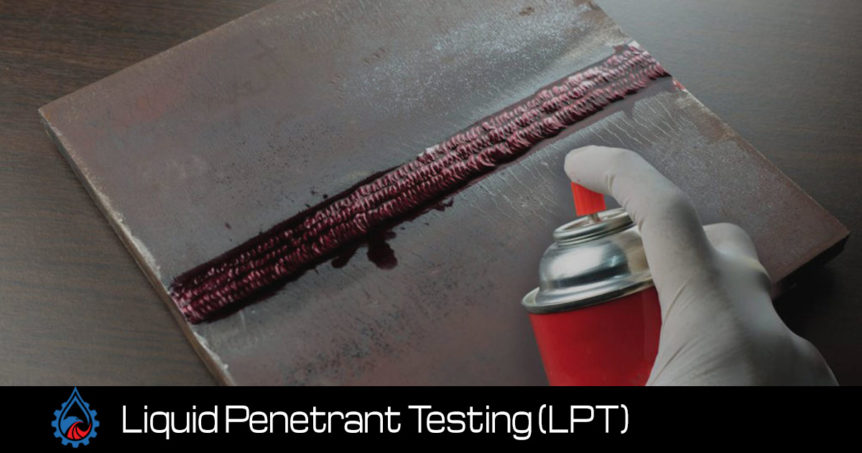Liquid Penetrant Testing (PT)
HOW LIQUID PENETRANT TESTING WORKS
When a penetrant is placed on a clean, dry surface at the correct contact angle, it will wet the surface properly and migrate by capillary action. This capillary action causes the liquid to enter discontinuities that are open to the surface and creep up or down into the cavity.
Penetrant dwell time allows the capillary action to cause the liquid to enter discontinuities. After excess surface penetrant is removed, only the penetrant in the discontinuities remains. Reverse capillary action causes the penetrant to migrate or bleed back out to form a penetrant indication.
The use of a contrasting developer aids the reverse capillary action bleedout and makes the indications easier to see. A PT indication is the penetrant bleedout spot against the contrasting developer background. After a developer dwell time, any liquid penetrant indications are evaluated to the specified acceptance criteria by one of our highly-trained technicians.
ADVANTAGES OF PT
Liquid penetrant testing is one of the most sensitive nondestructive test methods for detecting surface discontinuities. Discontinuity indications can be found regardless of the configuration of the test object or orientation of the discontinuity. Liquid penetrant testing can quickly examine all accessible surfaces of objects.
Liquid penetrant testing can be accomplished with relatively inexpensive, unsophisticated equipment. Small areas may be tested using portable equipment, or large batches and parts may be processed through dedicated testing systems.
WHO USES PT?
NEED PT?
Are you in need of Liquid Penetrant Testing? USINDT’s mobile darkrooms bring any needed materials to you as part of a full suite of testing, inspection and certification services for the construction, manufacturing, power generation, oil and gas, aviation and infrastructure sectors.

